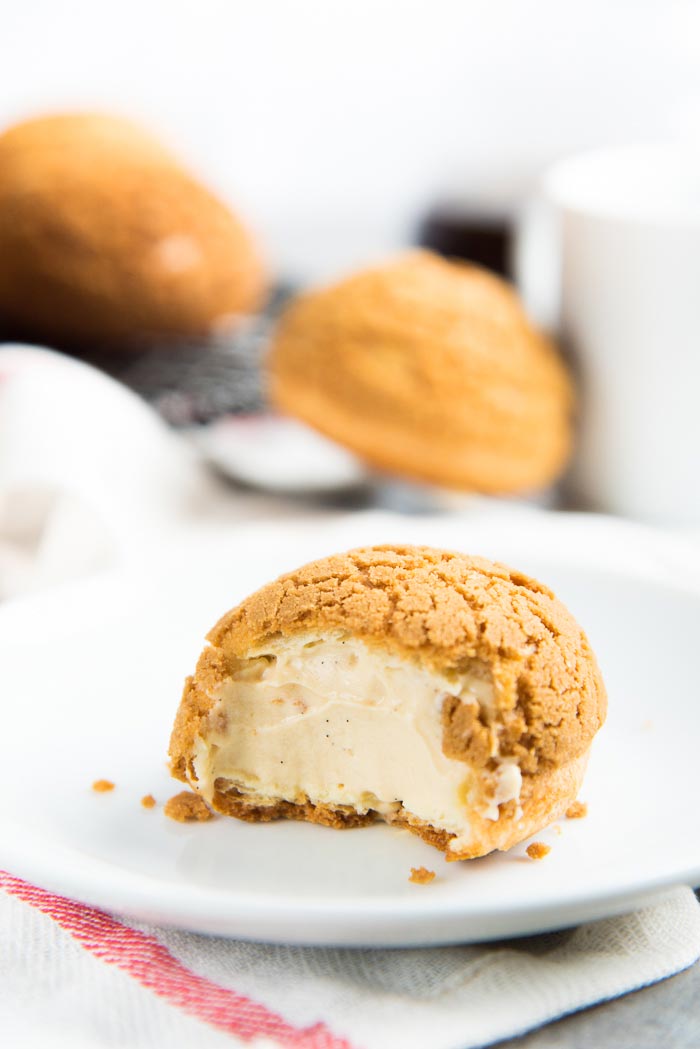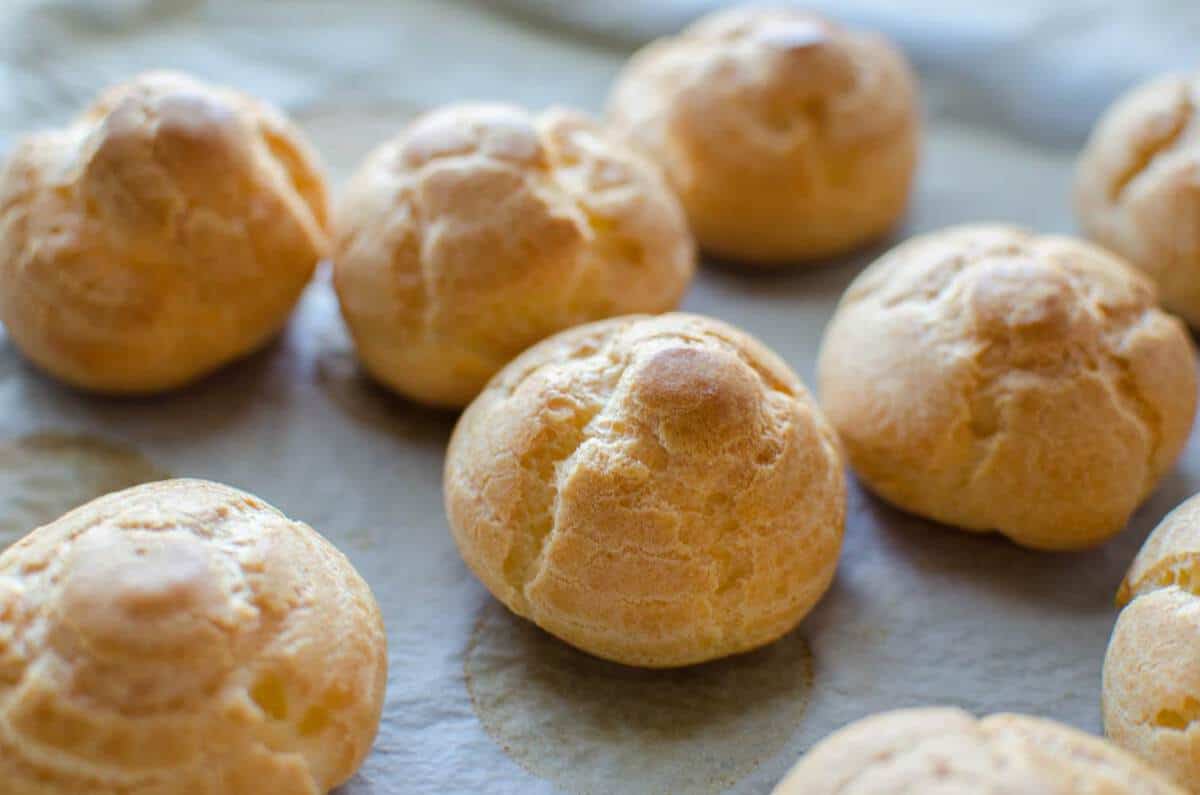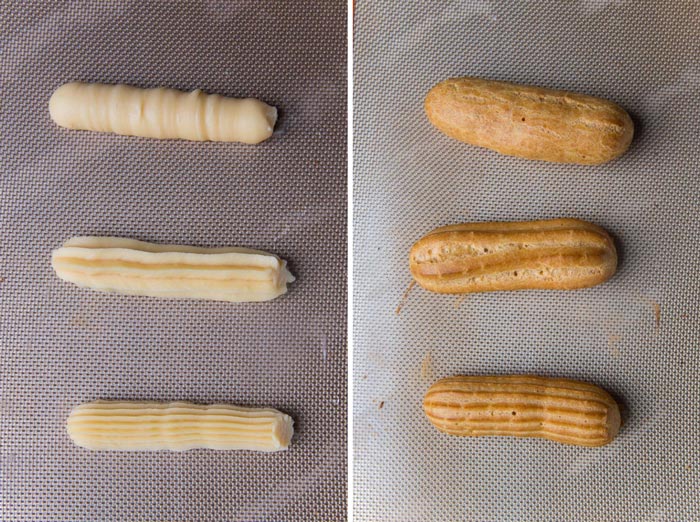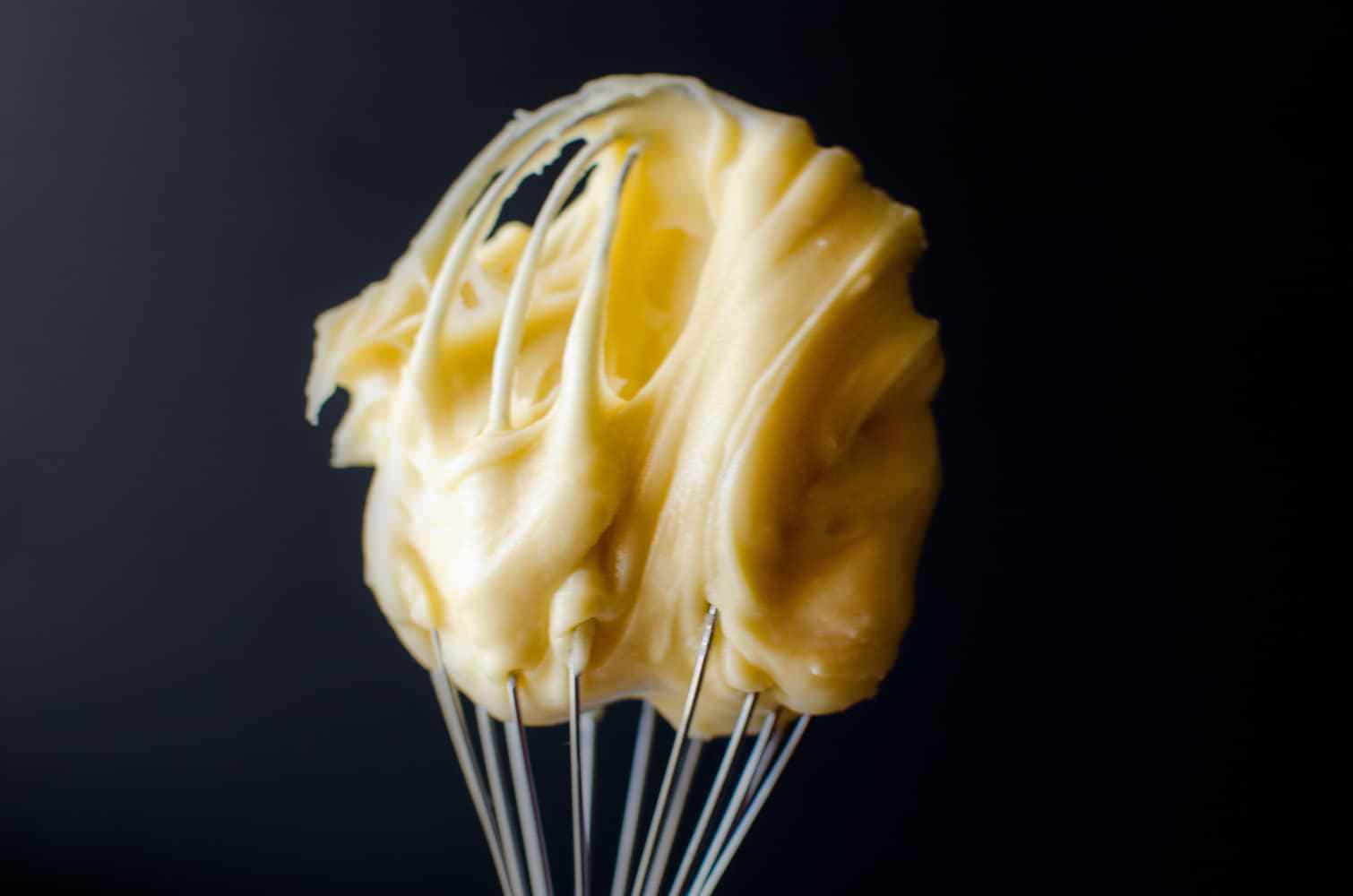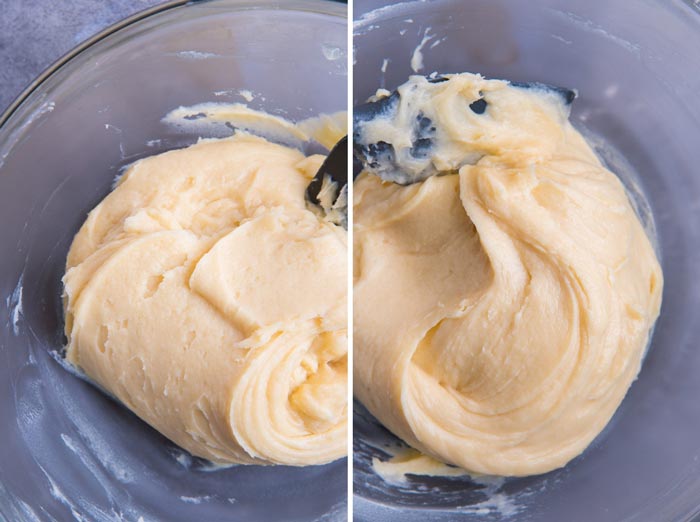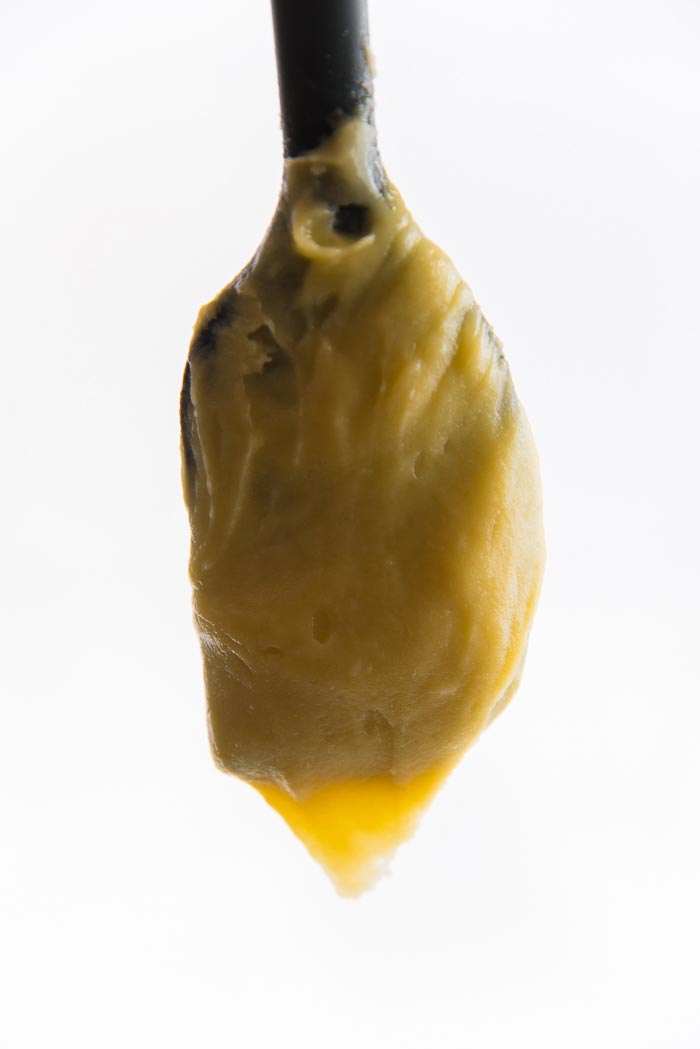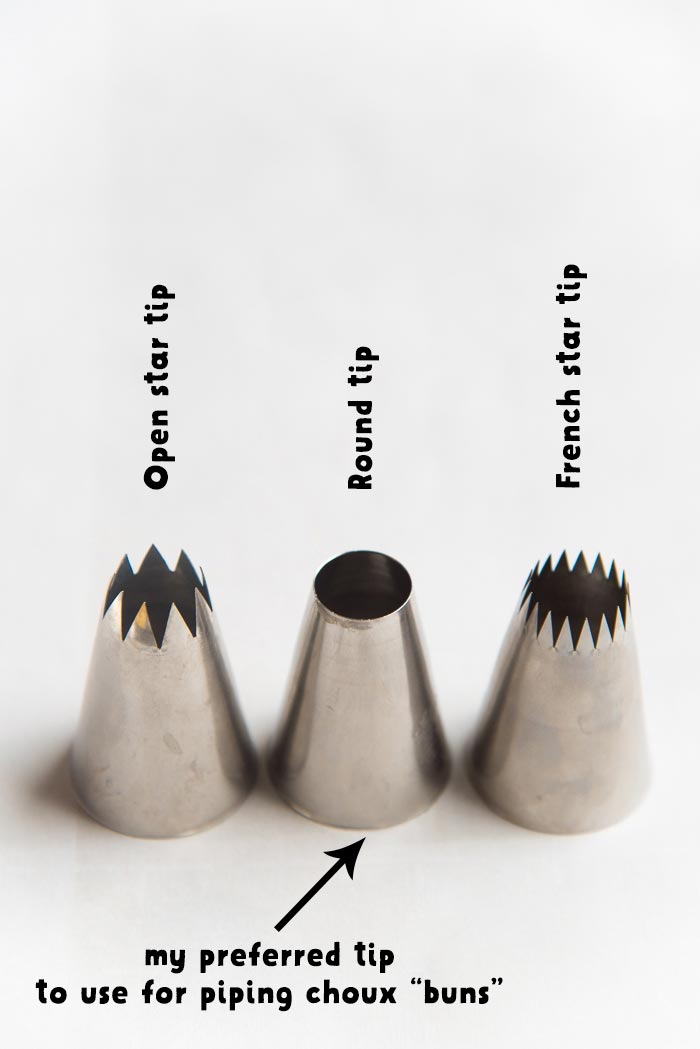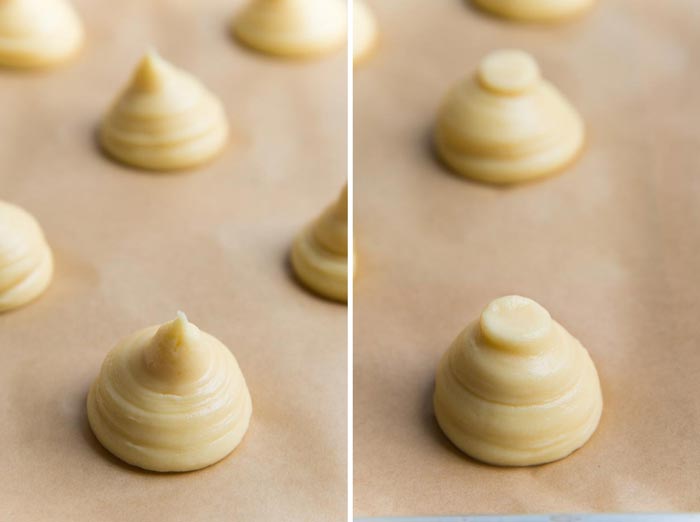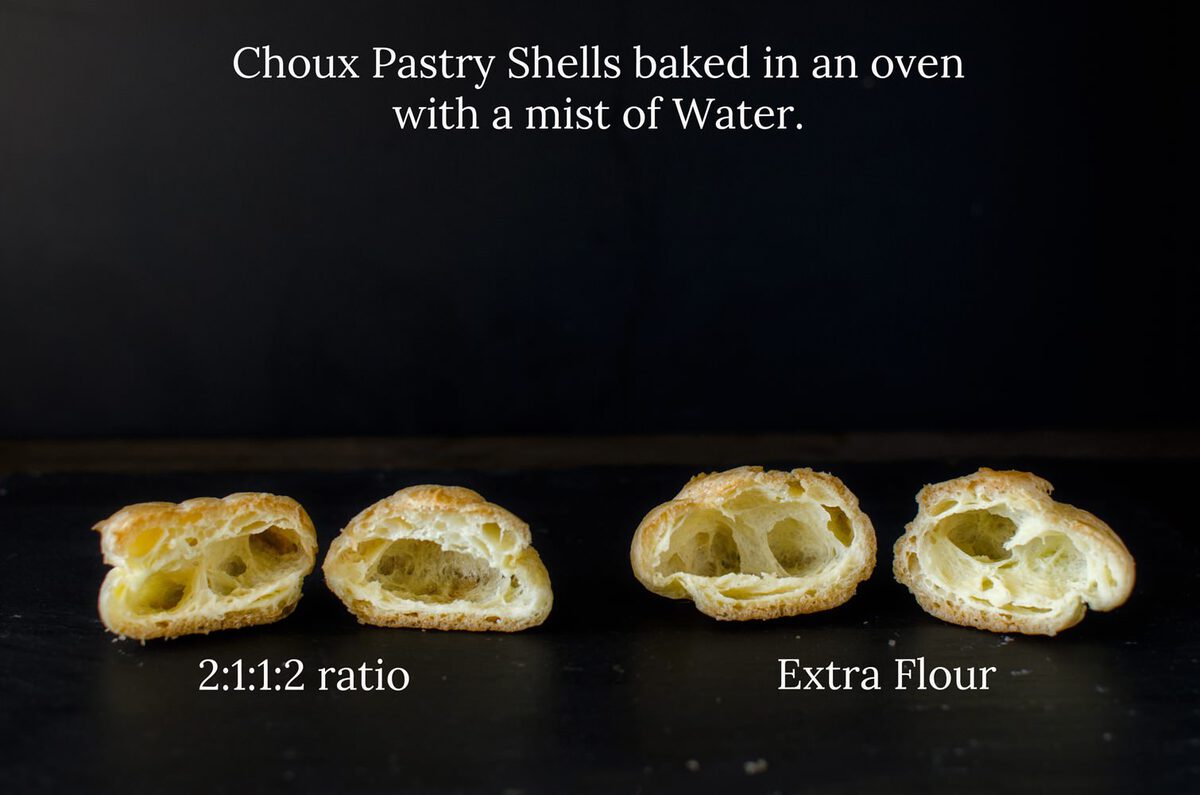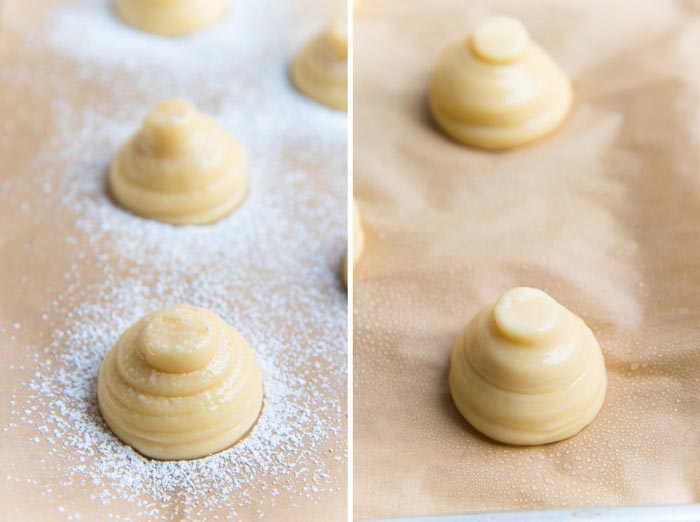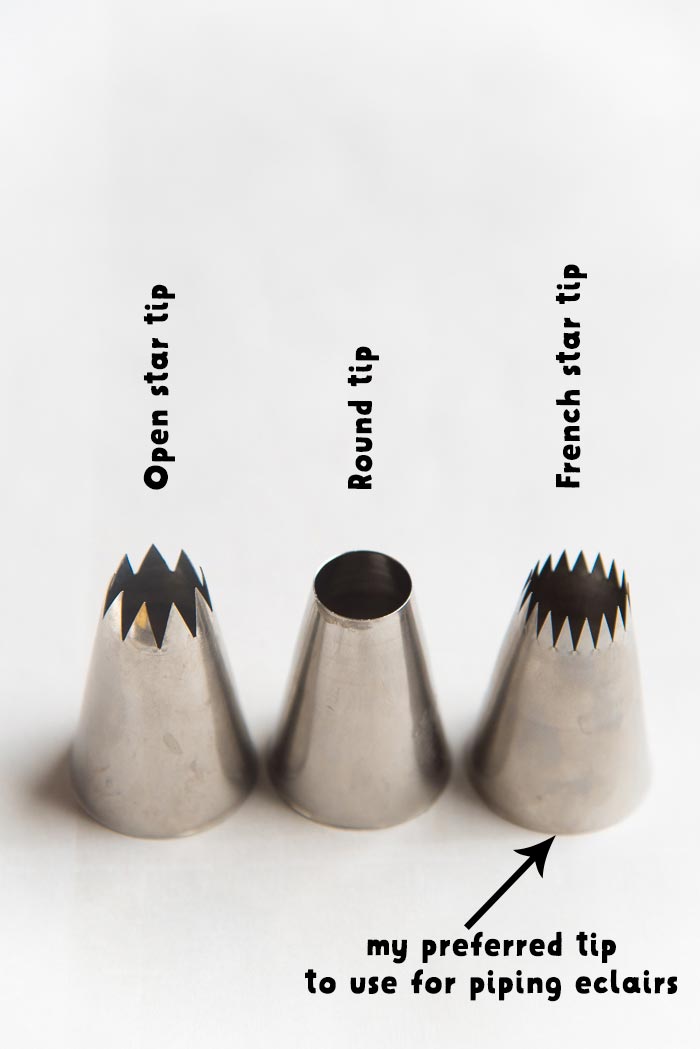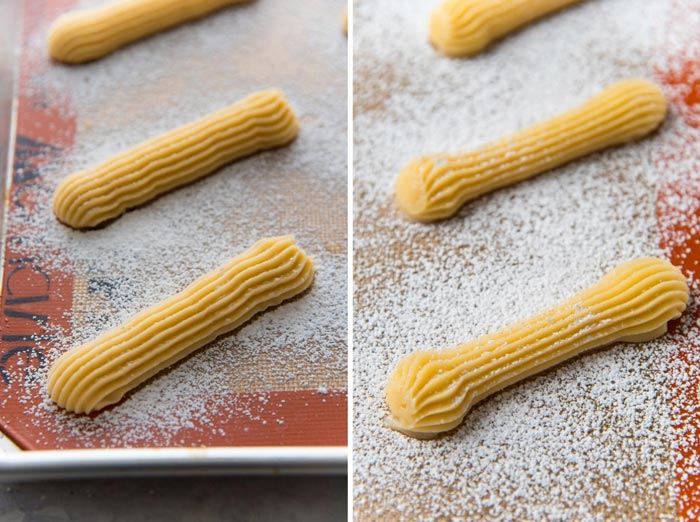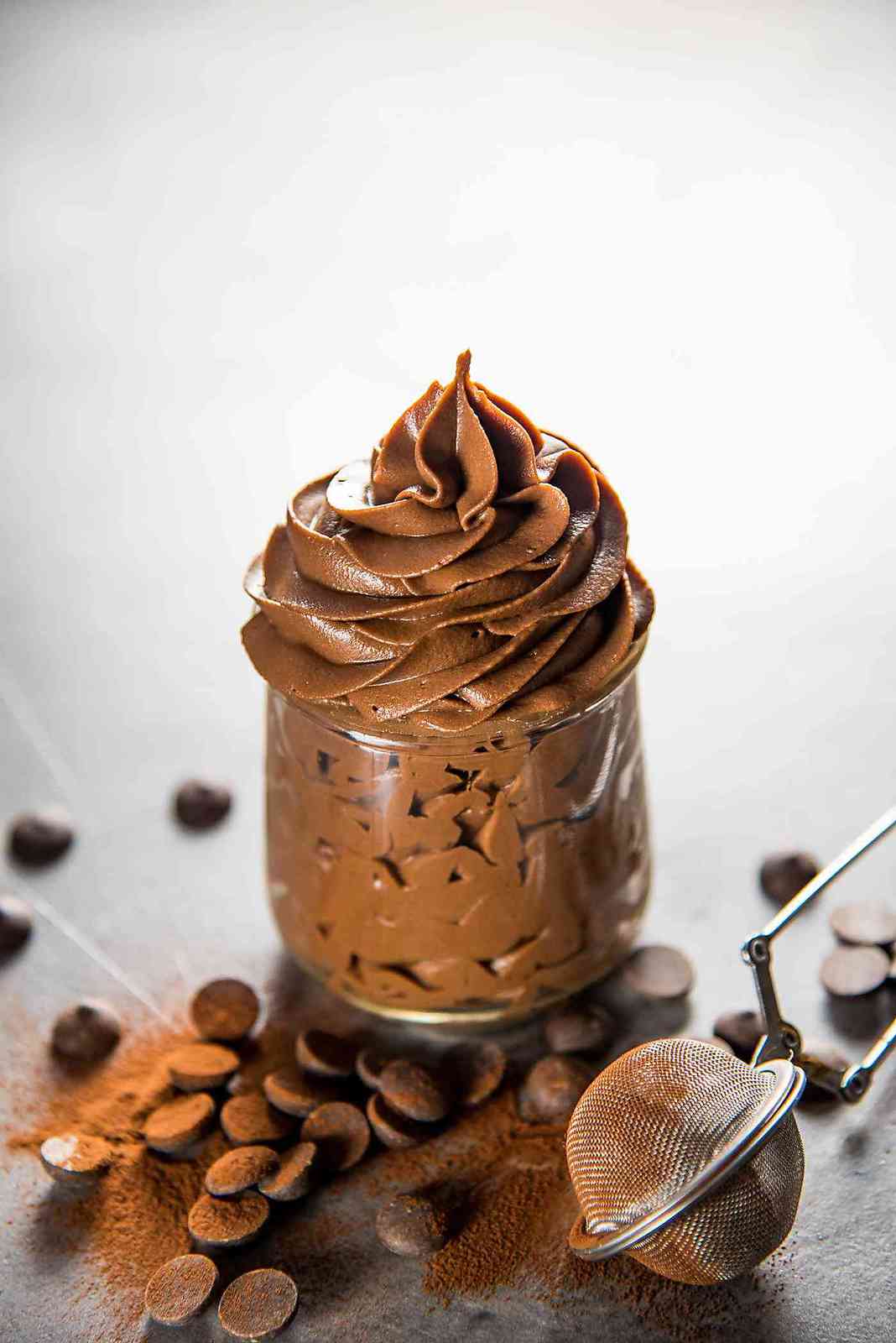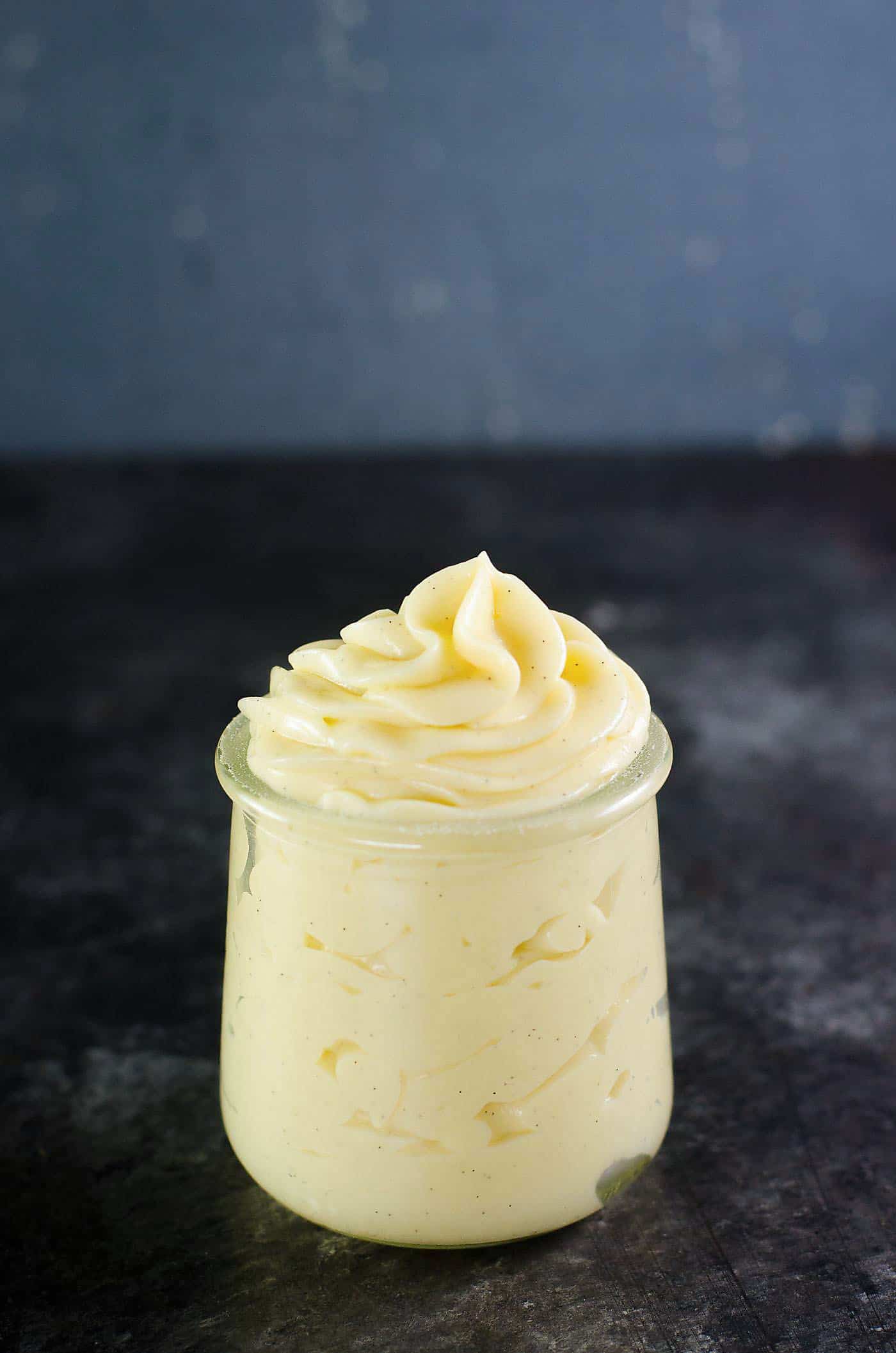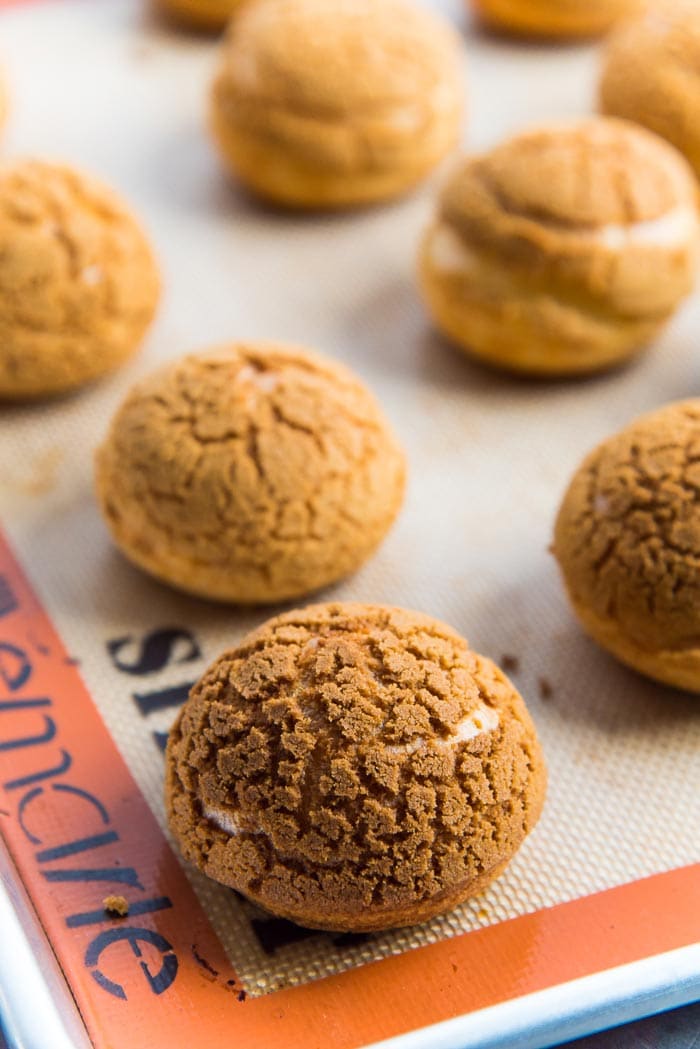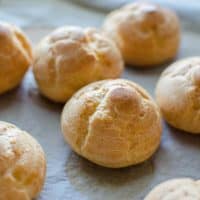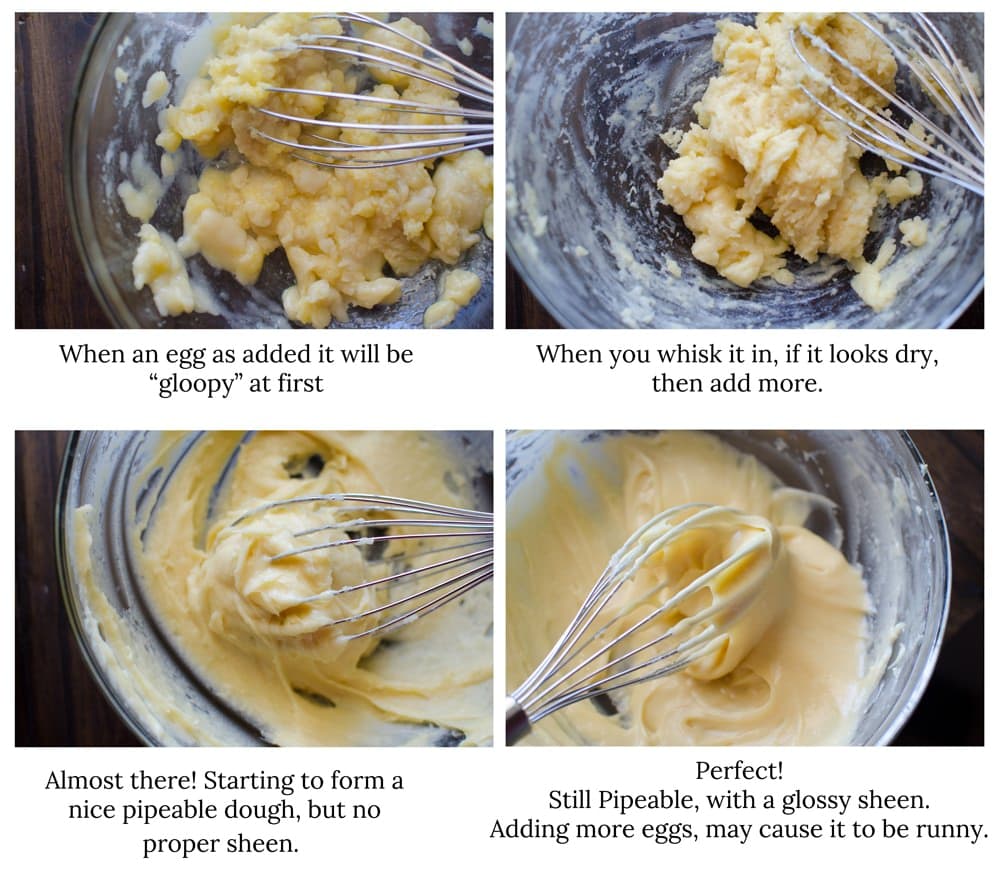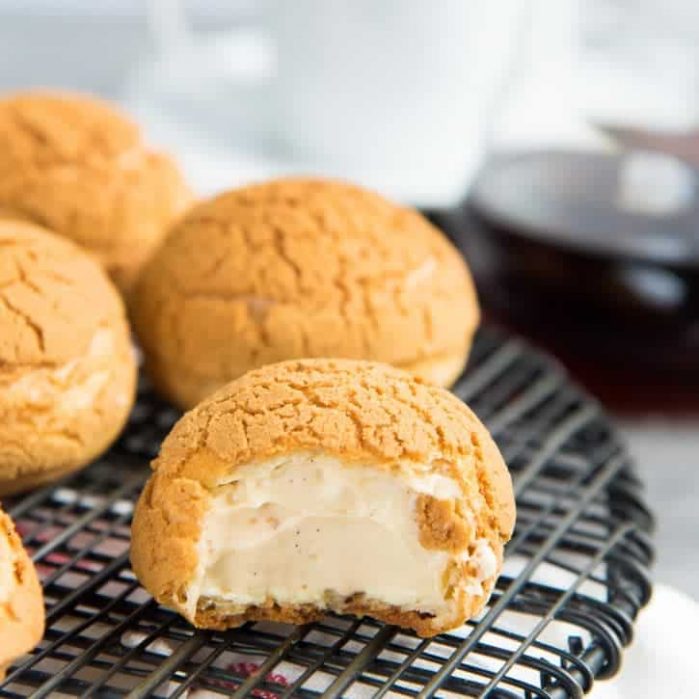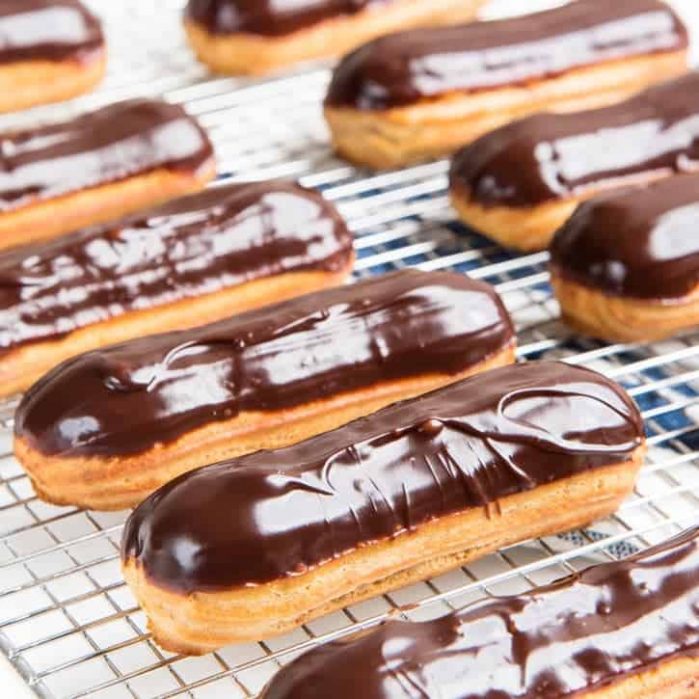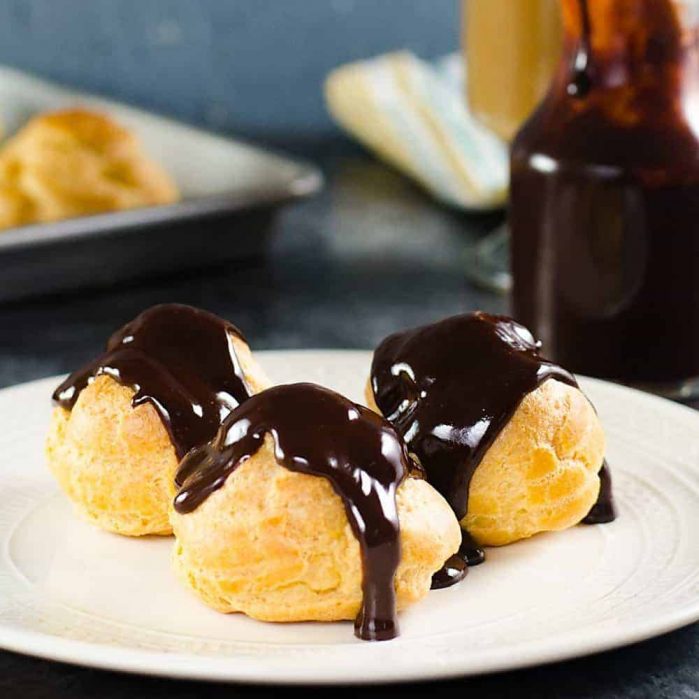I share all the tips and tricks to make foolproof, failproof, light, airy, puffy, crisp choux pastry (Pâte à Choux)! I had maintained for quite some time that I was a choux pastry whiz, because this classic French pastry dough was one of the first pastry recipes I learned how to make and I had been making it for well over 25 years by that point. But, one day, I just couldn’t get it right! And I couldn’t figure out what I was doing wrong. It’s a light, airy, crisp pastry used to make chouquettes, cream puffs, eclairs, profiteroles, choux au craquelin, paris brest, chicken bouchees, croquembouches, gougères, French crullers and more. And you could even make chocolate choux pastry as a variation. Flour, eggs, butter and water are all you need to make it. And depending on who you ask, choux pastry is either super easy or insanely difficult to make. What’s up with that? Let’s find out. I used to eat a lot of eclairs and cream puffs when I was little, so choux pastry has a special place in my heart. And I find it pretty ingenious that choux pastry doesn’t use a chemical raising agent to rise. Instead it uses air and moisture trapped in the dough to rise (water and eggs). So I started testing different ways of making it, until I finally understood what made it work. If your choux pastry recipe doesn’t always work, then THIS foolproof perfect choux pastry guide is for you. This post will help you understand WHY and HOW choux pastry works, with ALL the troubleshooting tips that cover every conceivable mistake. BUT, a few things can go wrong when you’re trying to bake perfect choux pastry. Homemade choux pastry however is the real deal! Crisp on the outside and airy & custard-like on the inside. And when you understand how choux pastry works, and what’s happening in each step, it really is super easy to make. So let’s find out how to make choux pastry, PERFECTLY, every single time. This is the ultimate guide for making foolproof and failproof choux pastry (pâte à choux), for perfect profiteroles, eclairs, choux au craquelin, paris-brest and other choux pastry based desserts. It’s a lengthy post, where I cover EVERY aspect of making perfect choux pastry, troubleshooting choux pastry problems, tips for profiteroles and eclairs, as well as variations. So hold on tight! Or you can skip down to the bottom of the post for the full recipe and recipe video. It can be round for profiteroles, cream puffs and craquelins, or elongated for eclairs. Personally, I like my profiteroles to be a little softer, and for my eclairs to have a firmer shell. This is because the elongated shape of eclairs hold up well, and are more stable if they are made to have a firmer shell. Profiteroles are more forgiving and foolproof than eclairs, because of their round shape, and as such I like to keep them a little softer. Choux buns (profiteroles, cream puffs), are less likely to collapse compared to eclairs. Now let’s see why these things happen.
Choux pastry troubleshooting
My pastry shells are flat, soft, and soggy
Have your profiterole shells collapsed? Do your eclairs have sunken concave bottoms? They’re not the, round, hollow, perfect choux pastry shells you see in bakeries? So what causes this?
Reason 1
Chances are the dough was too wet and runny. When you pipe out the batter, it probably didn’t hold its shape (see the picture above – the runny batter kind of spreads out). That means it has too little flour, or too much liquid in the form of water, eggs and/or butter.
Reason 2
Removing the choux pastry from the oven too early is another reason why your choux shells will be flat. If they were soggy to start with, then they will not rise properly. But even if they do rise, they will deflate when they cool down, due to too much moisture inside the shell, especially if you take them out of the oven too soon. The shells didn’t have enough time to form a stable crust, so they collapse as they cool down.
Reason 3
You need to prick the shells towards the end of the baking time (and/or after), to allow the shells to dry out. If you don’t, the hot humid air will collapse the soft shell as it cools down. As soon as the water mix comes to a boil, remove it from the heat (but don’t turn off the stove) and add ALL THE FLOUR IN ONE GO. Mix immediately for about 45 seconds, to make sure there are absolutely no lumps. Whatever you do, NEVER ADD EXTRA FLOUR! NEVER! Repeat after me – I will never add raw flour to a runny choux pastry dough. I see some recipes online suggesting this, and that is just a recipe for disaster. Make another half batch of the cooked dough with water, salt, butter and flour (with no eggs!). Once you’ve made that part of the dough by cooking it in a saucepan and you have the right consistency, let it cool down (covered). Add the cooled down dough to the runny dough a bit at a time, mixing it into the dough well, until you get the right, pipeable consistency. It always works like a charm! If that is the case, leave them in the oven longer (until the shell is a darker brown in color). If you baked them at 350°F or lower, then increase the oven temperature. And ALWAYS remember to prick your baked choux pastry shells (profiteroles or eclairs) with a skewer or a sharp knife and let the moisture inside the cases escape while drying out the shells. This helps prevent collapsed shells, so you can get perfect choux pastry shells. I also like to prick the shells during the last few minutes of the baking time to help with drying out the pastry shells. Some recipes call for letting the choux pastry shells dry out in the oven, with the door half open. You can do that too, but if you have another batch of choux pastry to bake, this can be cumbersome. So let the choux pastry cool down in a warm, draft-free area. I prefer keeping them in the kitchen (which is already warm because the oven’s been doing its thing). For more information about eclairs, check out my perfect chocolate eclairs recipe here.
Reason 1
Pâte à choux dough has undissolved solids or is not smooth. The salt or sugar hasn’t dissolved properly. The dough isn’t smooth because of flour lumps that haven’t been mixed properly, or you added raw flour to the dough after adding eggs. Chances are there’s stuff in your pastry batter that shouldn’t be in there. Things like flour that has not been sifted or salt that was not melted. This can interfere with the smoothness of the pastry. Many recipes call for pâte à choux to be baked at two different temperatures. First at a higher temperature for a few minutes, and then finish off at a lower temperature. The reasoning behind this is that the higher temp. facilitates the rise of the pastry because the high heat causes the water to evaporate faster, thereby raising the pastry faster and higher. Then the temperature is lowered and the pastry is allowed to dry out and bake properly. Ripples in the dough will give rise to cracks. This is especially true for profiteroles. So make sure the tip is always touching the surface of the dough when you’re piping, and you’re applying smooth and consistent pressure, without causing ripples. While the shape of the piping tip doesn’t really matter when it comes to profiteroles, this can cause irregularities with eclairs. Eclairs piped with a round tip can cause more cracks on the surface, compared to a French star tip that has “finer teeth”. These lines or marks in the piped dough increase the surface area and allow the eclair shell to expand without causing unsightly cracks. You can check out my comprehensive classic eclairs recipe post on making eclairs for more details. I’ve read that the addition of completely dissolved salt apparently helps prevent cracks from being formed on the shell, although I’m not sure why. I didn’t test it without salt to see if that’s indeed the case. You need to add a bit of salt to the dough anyway, because it really enhances the flavor of the choux pastry, so there’s really no reason to go without salt. Just make sure to stir the water-butter mixture frequently to make sure the salt and sugar dissolve well before the water comes to a boil. So sift the flour before you add it into the boiling water. This will make sure there are no lumps in the flour to begin with, and that the flour is nice and light. Mix the flour into the water off the heat, so you can really make sure the water is being absorbed by the flour and there are no lumps. I like to use a flexible silicone spatula to do this, and mix the dough by flattening any lumps I see with the spatula as I go. Then I return it back to the heat and mix it further to cook off the extra water. The theory of baking choux at two different temperatures may work for some. And if it does for you, you can keep doing that. However, I find that cooking choux pastry at one set temperature the whole way through, produced more consistent results with a smooth top and minimal cracks. Plus it’s more convenient of course. I’ve found that the high temperature that most recipes call for, makes the choux pastry expand and rise rapidly, almost chaotically, causing the pastry to split and look ugly.
Piping nozzle
If you’re making eclairs, I highly recommend a French star tip. This will also minimize ugly cracks in the eclair shells and help keep the shape of your eclairs. Or if you added raw flour to your dough because it’s too runny, it can mess with the final consistency too. This can also happen if you let the choux pastry stand outside uncovered, for hours, after they’ve been cooled. You CAN leave the choux pastry covered in an airtight container though!
Dough consistency
Make sure to check the consistency of the dough, and not add raw flour to fix runny dough. If your dough doesn’t have a sheen even after adding all the eggs, don’t worry! Just add extra eggs until you get that right consistency. Chances are you may have cooked the dough too long and too much water evaporated, but it can easily be fixed by adding extra eggs. Just make sure to add a little at a time, rather than a whole egg at once. Michael Ruhlman’s ratio by weight for choux pastry is 2:1:1:2 of water, butter, flour and eggs. While this works well, I find that adding a little extra flour helps make perfect choux pastry that is crisp and stable. The pastries keep its shape as it bakes – a very desirable result. Whenever you can, ALWAYS measure ingredients by weight, not by volume. This is true for any kind of baking. While I don’t have a problem measuring by volume for some recipes, I always prefer to use weight because that gives more consistent results. Here’s a good inexpensive kitchen scale that you can use. With eggs, I like to crack them into a jug, and whisk them before adding to the dough. Always start with cold water (or milk). Add the salt and the sugar to the water. Cut the butter into pats (or smaller), to ensure that it melts BEFORE the water comes to a boil. You don’t want to keep stirring boiling water to melt the butter. Stirring the water frequently while it warms up ensures that the salt, sugar and butter melt before the water comes to a boil. This is important because you need to mix in the flour well (flour needs to absorb all the moisture of the butter-water mix), and having a smooth dough means that you won’t have cracked shells later. Then cook the dough further on the stove so that enough moisture evaporates to get a good dough. A lot of recipes will talk of different signs to look for when cooking the dough – from the dough pulling away from the sides of the pan, to the dough looking like mashed potatoes, or leaving a film of dough on the bottom of the pan. Heating the dough for too long can cause the butter to split from the dough as well. So make sure you don’t do this. If you’d like to, you can add one egg at a time too. Just make sure that the last egg (4th), is whisked in a small bowl and it’s added only a little at a time to prevent the dough from being too runny. The way I prefer to cool down my dough is to place the dough in a bowl, and then flatten the dough along the sides of the bowl. This increases the surface area, so it cools down faster, plus more water evaporates as you do this. Some recipes call for mixing the dough in a stand mixer for a couple of minutes. This is fine too, but make sure you’re only mixing it on low speed and no longer than 2 – 3 minutes. Agitating the dough too much can cause the butter to split from the dough, and then you’ll get a really oily looking dough. As mentioned earlier, I like to have all the eggs whisked well in a jug first, before adding it to the dough. This is because I can add a little at a time until I get the consistency I like. Whisking them beforehand ensures that you get an even mix of egg white and yolks being added to the dough at all times. Mix in each addition of eggs before you add the next. You can check the consistency of the dough as you go and make sure you don’t add too much egg. At the beginning you can add about 1/4 cup (or 1 egg) of eggs at a time, but then add the last bit in small increments. What you’re looking for here is a dough that looks glossy, but still thick, can hold its shape and is pipeable. Sometimes I only need to add 3 1/2 eggs before I get the right consistency, and if I added all of the 4th egg, then my dough would lose the stiffness I need. If that happens, the dough won’t hold its shape when piped, leading to flat choux pastry. Not good. Remember to use a damp finger to flatten the apex or any points, otherwise these points will burn when you bake the profiterole shells. However, if you’re topping the choux pastry with craquelin, then you don’t have to do this. Because when you added water to cook the dough previously, how much water gets evaporated during the cooking process can vary a lot. How you measured the water, what saucepan you used to cook the dough, how long you cooked the dough can all have an impact on how much water is left in the dough.
Pastry flour needs less eggs than if you used AP flour. Bread flour needs more eggs than if you used AP flour.
Alternatively, you can use a spoon or a mini cookie scoop to spoon the dough on to a baking sheet as well. I do recommend piping though. Also remember to hold the pastry bag (and tip) upright when you’re piping profiteroles, and you’re not doing it at an angle. This way your choux pastry will rise perfectly upwards, and not be lopsided. Once you have piped choux dough on one tray, keep the remaining dough in the pastry bag until you’re ready to bake the next batch. The dough will even keep well in the fridge as long as it’s wrapped inside a pastry bag, or an airtight container. I use either the Wilton 1A Round Tip or Wilton 2A Round Tip for my profiterole pastries and I LOVE my 16 inch disposable pastry bags because they are sturdy, and hold more of the dough. Any 1/2 inch round tip (or similar sized tip) is good for regular profiteroles or cream puffs. However, if you want crispness over volume, then sift some confectioner’s sugar on top before baking. As the water on the baking tray evaporates from around the dough, it helps “raise” the dough from the outside while the moisture IN the dough, helps raise it from the inside.
Baking the choux pastry
Pricking choux pastry shells
I used to prick each choux pastry shell with a toothpick as soon as they came out of the oven and were cooling down, in order to dry out the shells. Eclairs are a bit trickier than profiteroles when it comes to maintaining their shape. But I’ve discussed all the tips and tricks in my eclairs post, so that you too can make perfect chocolate eclairs, every single time! With eclairs, I also prefer to use a French star tip over a round tip. This really helps with maintaining the eclair shell shape. I use a 1/2 inch French star tip from the Ateco French star tip set. I also prefer to use bread flour, so that the dough will be more sturdy (than with AP flour). Since I also don’t want my eclairs to puff up too much, I like to dust the eclairs with confectioner’s sugar instead of water. Confectioner’s sugar slightly caramelizes on the shells, giving them a little extra sweetness and a delightful crunch. For more details, check out my chocolate eclairs post for tips on how to pipe eclairs and make classic chocolate eclairs. Plus, after I bake one tray of choux pastry, I don’t want to wait for the temperature to rise back up before baking the next tray. So I bake choux pastry at one constant temperature – 375°F, for 35 – 45 minutes, for perfect choux pastries, every single time. This means you should never open the door during the first 25-30 minutes of baking (for standard-sized choux pastry; the time goes down for smaller shells and up for larger ones). I wait till the shells are golden colored before opening the door. This prevents steam from escaping too early, which will cause the shells to collapse. Because of this, I only bake one tray at a time because it’s hard to switch the trays halfway through the bake time. But now I’ve found that pricking the shells during the last 5-10 minutes of baking helps dry out the shells more, and keep them crisp and sturdy. So now I open the oven door at the 25-30 minute mark, prick each shell with a toothpick or skewer during that last 5-10 mins of baking, and allow the steam inside the shells to escape. Use a sharp toothpick to pierce the casings. For larger pate a choux pastries (more than 2.5 inches in diameter) and eclair shells, I prick them one more time when the choux pastry comes out of the oven (after being baked to a nice, slightly darker golden brown color and crisp shell). Allow them to cool down in a warm, draft-free place (I usually do this near or on top of the oven), so that a sudden temperature change won’t cause them to collapse either.
How to store choux pastry
Unbaked choux pastry dough can be stored in an airtight container, and in the fridge for up to 2 days. I place the dough in a pastry bag (piping bag) and seal the bag so that the dough has zero contact with air. You can also place the dough in a bowl, and then cover the whole surface with plastic wrap. You can also pipe the choux pastry into the shape you like and freeze as quickly as possible. As soon as the choux pastry is frozen, you can place them in ziploc bags. I personally haven’t tried this, but there are bakeries that do this and still get good results. The most important thing is to prevent freezer burn. Baked choux pastry can be stored in an air tight container, at room temperature for 24 hours (unfilled). They do lose their crispness, so you may want to reheat them at 300 F, just until they’re warmed through and crisp. Unfilled cases can also be frozen in airtight container for longer. But will need to be warmed in the oven before being filled.
Frequently asked questions
Equipment and tools I use for this recipe
WILTON 1A Round Tip WILTON 2A Round Tip ATECO Round tip set ATECO French tip set 16 inch Disposable Pastry bags Digital Kitchen Scales Silpat mats
Watch me make perfect choux pastry (recipe video)



